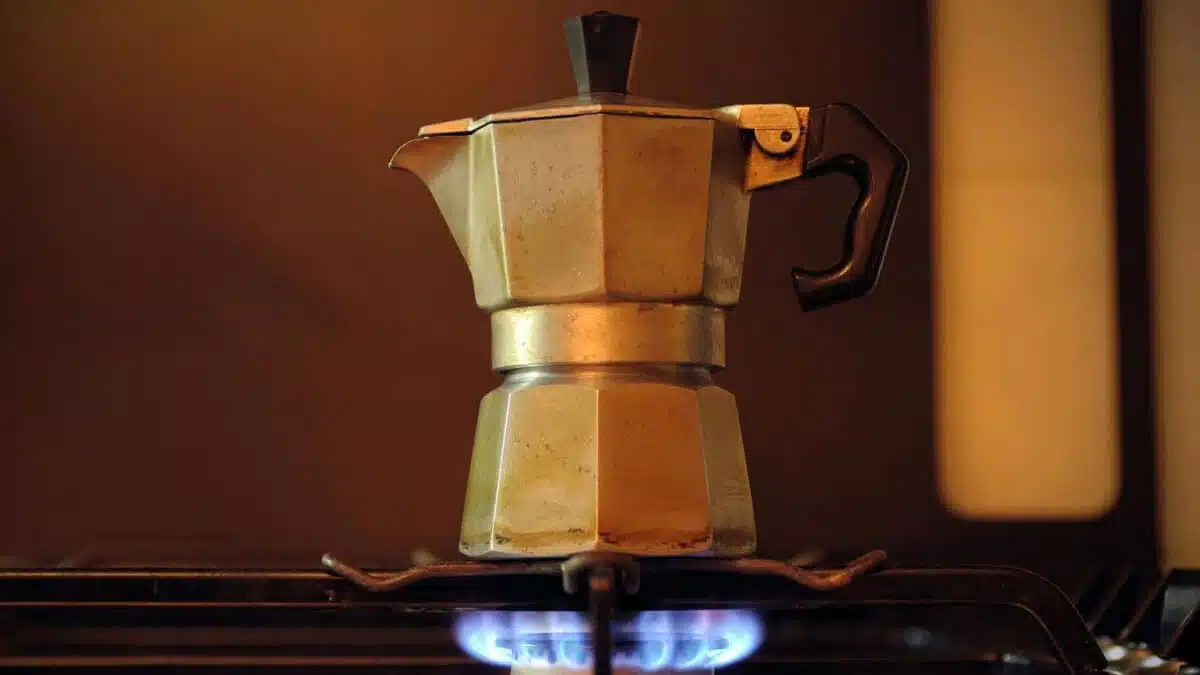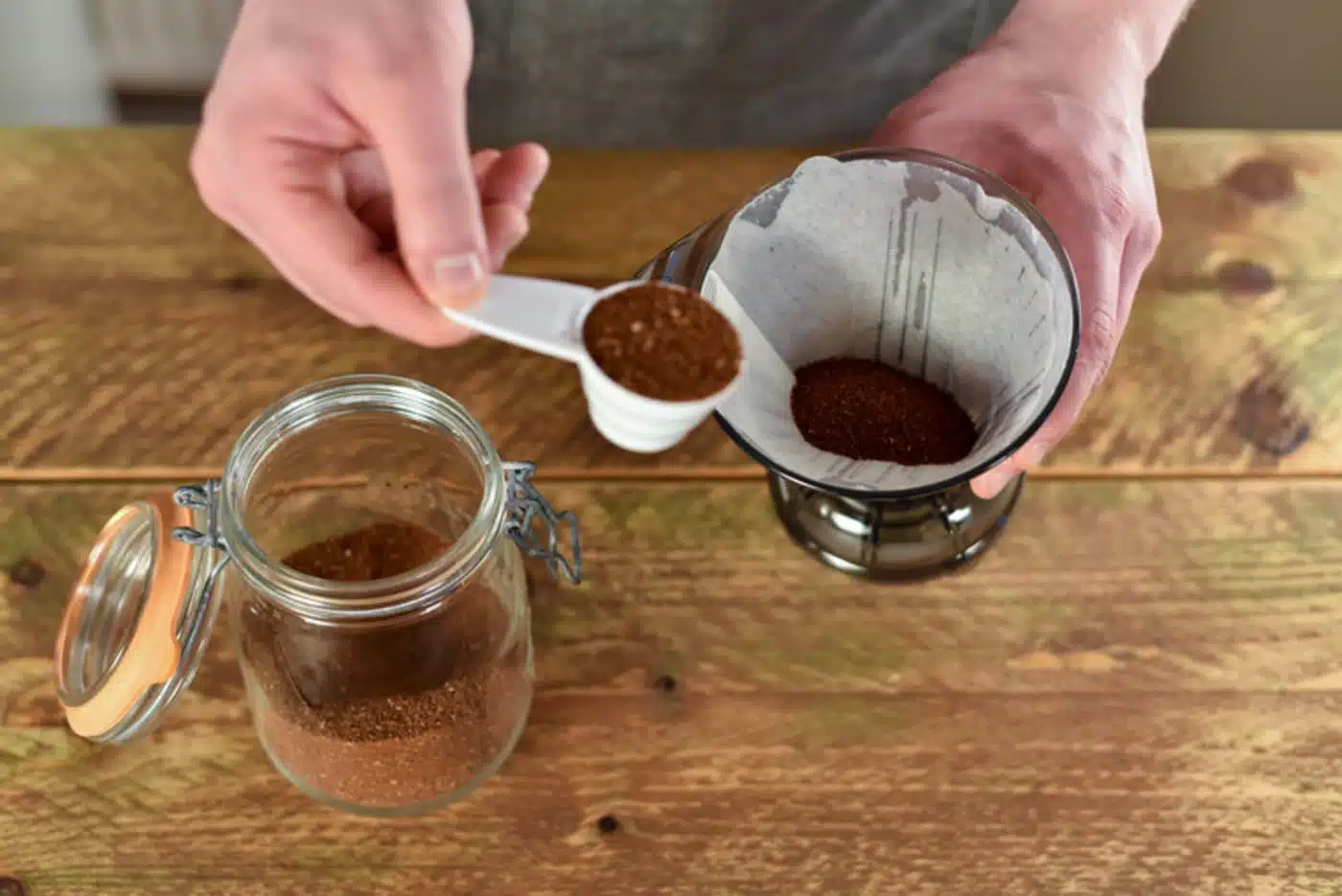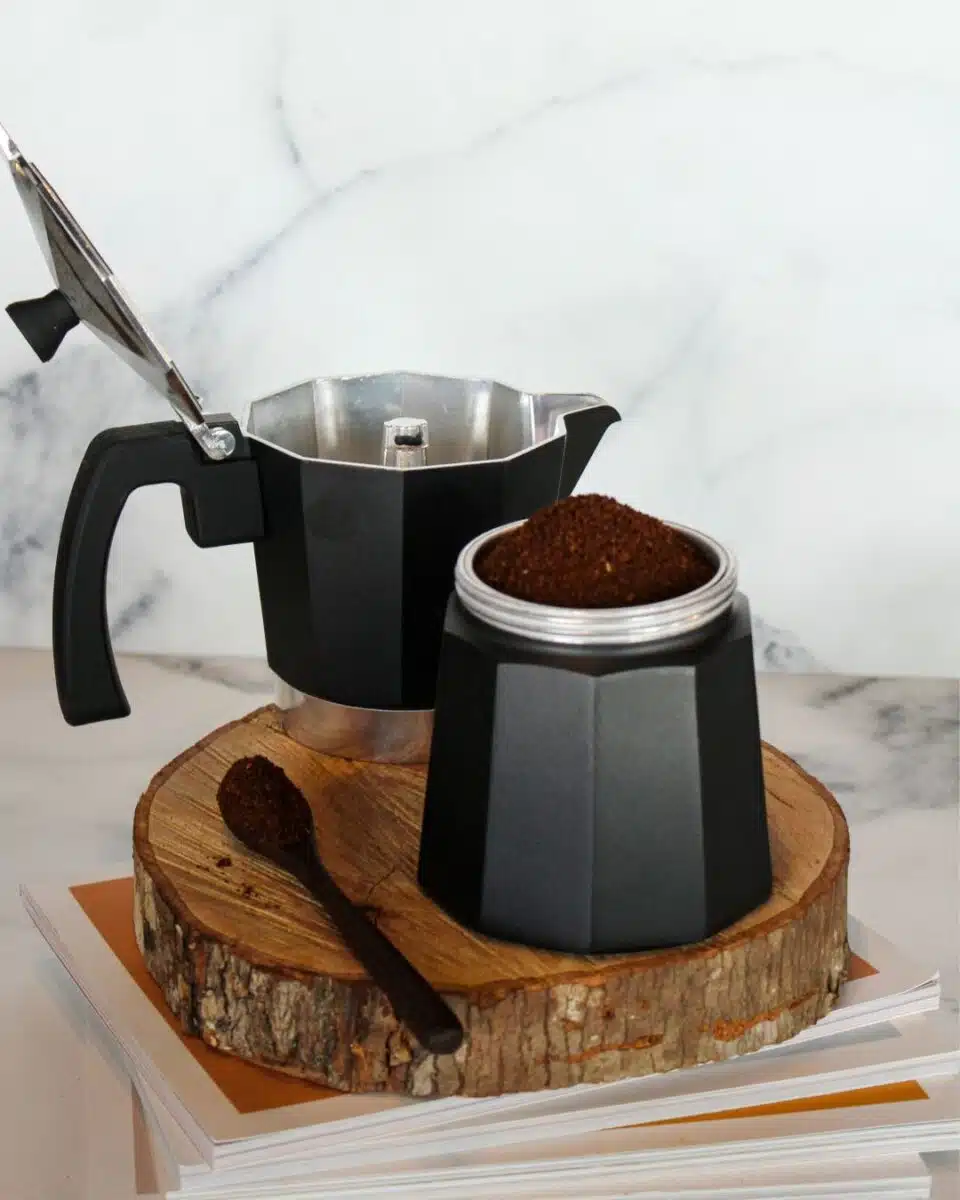Many coffee lovers crave the rich, robust flavors of espresso but may not have access to an espresso machine. Fortunately, you can still enjoy delightful espresso without a machine by employing some creative techniques. With just a few simple tools and the right coffee beans, you can replicate the brewing process, savoring the intricate flavors that make espresso so beloved. Whether you choose a French press or a stovetop Moka pot, you’ll find making espresso at home rewarding and delicious. Let’s explore how to craft this delightful beverage entirely by hand!
Understanding Espresso and Its Unique Flavors
Espresso is not just a coffee; it’s an experience, a rich flavor profile that brings joy to your senses. Originating in Italy, espresso packs a punch with its concentrated flavor and characteristic crema, a golden layer that forms on top of the brew.
Unique Flavor Characteristics of Espresso:
- Boldness: The pressing brew method extracts powerful flavors, resulting in a rich, full-bodied taste.
- Bitterness: Noteworthy for its slight bitterness, espresso often includes a balance of sweet and acidic notes.
- Aroma: The unique scents—ranging from nutty to chocolatey—add to espresso’s allure.
Why It’s Unique:
When you make espresso without a machine, the preparation method influences the final flavor. Factors such as the grind size, water temperature, and brew time can heavily affect the taste. Here’s how different preparation methods stack up:
| Method | Flavor Profile | Difficulty Level |
|---|---|---|
| French Press | Bold, smooth | Easy |
| Stovetop Moka Pot | Intense, rich | Moderate |
| AeroPress | Clean, bright | Easy |
With each method, you’ll explore the nuances of espresso, uncovering delightful flavors and aromas that challenge preconceptions about making espresso without a machine. Enjoy the process of experimentation, and you may just find your favorite espresso variation!

Why You Might Want to Make Espresso Without a Machine
Making espresso without a machine offers several refreshing advantages that appeal to coffee lovers and casual drinkers alike. Here are some reasons why you might consider this brewing method:
- Cost-Effective: High-quality espresso machines can be quite expensive. By exploring methods like the French press or stovetop moka pot, you save money without sacrificing the rich flavors of espresso.
- Portability: If you’re on the go or traveling, brewing espresso without a machine is convenient. You can easily pack lightweight tools and enjoy your favorite drink anywhere.
- Customizable Experience: When you make espresso without a machine, you have full control over every element, from the grind size to the brewing time. This flexibility allows you to perfect the taste based on your preferences.
- Unique Flavor Profiles: Each method of making espresso without a machine—be it a French press or a moka pot—offers distinct flavors, giving you the opportunity to experiment with various brew techniques.
- Appreciation for Craftsmanship: Manually crafting your espresso fosters a deeper connection to the coffee-making process. You’ll gain a greater appreciation for the ingredients, and your coffee skills will flourish.
With so many benefits, making espresso without a machine can be a rewarding experience. So, grab your tools, choose your beans, and start brewing!
Tools You’ll Need for Manual Espresso Making
Creating a delicious espresso without a machine may seem daunting, but with the right tools, you can easily craft a satisfying cup. Here’s a list of essentials to get you started on your espresso journey:
- Coffee Grinder: A quality burr grinder is crucial for achieving the perfect grind size. Look for one that allows you to adjust the grind to a fine consistency, which is vital for espresso without a machine.
- Scale: Precision is key in espresso making, so invest in a digital scale to measure your coffee and water accurately. Aim for about 18-20 grams of coffee for a single shot.
- Brewing Device: Choose your preferred manual brewing method, such as:
- French Press: Great for making concentrated coffee.
- Stovetop Moka Pot: Mimics espresso-like quality but requires careful monitoring.
- Kettle: A temperature-controlled kettle will help you achieve the correct brewing temperature, ideally around 200°F (93°C).
- Tamper: If using a device like the Moka pot, a tamper can help you compress the coffee grounds evenly.
- Timer: Timing your extraction is crucial for flavor. A simple stopwatch or timer app will do the trick.
By gathering these essential tools, you’re well on your way to mastering the art of creating espresso without a machine. With practice and patience, you’ll enjoy rich, flavorful espresso right at home!
Choosing the Right Coffee Beans
When making espresso without a machine, selecting the right coffee beans is crucial for achieving that rich, intense flavor typical of traditional espresso. Here are some key factors to consider:
- Bean Type: Arabica and Robusta are the two primary coffee bean types. Arabica offers a sweeter, more complex flavor, while Robusta provides a stronger, earthier taste with a higher caffeine content. For a classic espresso, many prefer a blend of both.
- Freshness: Opt for freshly roasted beans. Look for a roast date on the packaging, and aim to use your beans within a few weeks of that date. Stale beans can significantly diminish the quality of your espresso.
- Roast Level: Dark roasts are commonly used for espresso due to their bold flavors. However, don’t hesitate to experiment with medium roasts for a different taste profile.
- Bean Origin: Different regions produce beans with varying flavors. For example, beans from Brazil are often nutty and chocolatey, while Ethiopian beans might have fruity and floral notes. Choose based on your flavor preference!
| Type of Bean | Flavor Profile | Caffeine Content |
|---|---|---|
| Arabica | Smooth, sweet | Lower |
| Robusta | Bold, earthy | Higher |
In summary, when you’re preparing to brew espresso without a machine, consider these factors to ensure the best flavors in your cup. Happy brewing!

Grinding Your Coffee: How Fine is Fine Enough?
When making espresso without a machine, the grind of your coffee beans plays a crucial role in achieving that rich, bold flavor we all adore. Let’s dive into the perfect grind consistency for your espresso adventure!
Why Grind Size Matters
Fine grinding increases the surface area of the coffee grounds, which allows water to extract flavors more efficiently. If your coffee is too coarse, you’ll end up with a weak and watery brew. On the other hand, if it’s too fine, you risk over-extraction, leading to a bitter taste.
Ideal Grind Size for Espresso
- Texture: Aim for a consistency similar to granulated sugar or flour.
- Visual Check: The grounds should appear slightly dust-like but not powdery.
Comparison of Grind Sizes
| Grind Size | Ideal For | Flavor Outcome |
|---|---|---|
| Coarse | French Press | Weak, under-extracted |
| Medium | Pour-over | Balanced, pleasant |
| Fine | Espresso | Rich, concentrated |
| Extra Fine | Turkish coffee | Very intense, thick brew |
Quick Tips
- Use a burr grinder for consistent particle size.
- Start with a medium-fine grind and adjust based on your brewing method.
By focusing on the right grind size, you increase your chances of brewing a delicious espresso without a machine. Happy brewing!
The Perfect Water Temperature for Brewing
When brewing espresso without a machine, getting the water temperature just right is crucial for extracting the best flavors from your coffee. The ideal temperature for brewing espresso lies between 195°F to 205°F (90°C to 96°C). Here’s why it matters:
- Flavor Extraction: Water that’s too cold results in under-extraction, leading to sour and thin-tasting espresso. Conversely, water that’s too hot can cause over-extraction, making your brew bitter.
- Consistency: Maintaining the right temperature helps achieve a consistent flavor profile with each cup.
Tips for Achieving the Right Temperature:
- Use a thermometer: Keep a kitchen thermometer handy to check your water temperature accurately.
- Heat the water: Start heating your water until it reaches the desired temperature. Remove it from the heat source just before it begins boiling, as the water will continue to rise in temperature.
- Test before brewing: If you’re unsure, pour a small amount of hot water over your coffee grounds to gauge if the temperature feels right.
Summary
In summary, controlling the water temperature significantly impacts your espresso without a machine. Stick within the optimal range and you’ll unlock the rich and balanced flavors your coffee beans have to offer. Happy brewing!
Different Methods to Brew Espresso Without a Machine
Creating espresso without a machine can be an exciting adventure! Fortunately, several techniques allow you to enjoy a rich, flavorful espresso experience. Here are some popular methods to consider:
1. French Press
- Brewing Time: 4 minutes
- Pressure: None (but can create a strong brew)
- Taste: Bold and robust
- Method:
- Boil water and let it cool for around 30 seconds.
- Add finely ground coffee (about 2 tablespoons per 6 ounces of water).
- Pour water over the coffee, stir, and let it steep.
- Press down the plunger slowly.
2. Stovetop Moka Pot
- Brewing Time: 5-10 minutes
- Pressure: Moderate (which mimics machine pressure)
- Taste: Strong, slightly bitter
- Method:
- Fill the bottom chamber with water and the filter basket with finely ground coffee.
- Assemble and place on low heat until it starts to bubble.
3. AeroPress
- Brewing Time: 30 seconds
- Pressure: High (manually created)
- Taste: Smooth, with a clean finish
- Method:
- Add coffee and hot water into the AeroPress.
- Stir, then press down the plunger steadily.
4. Pour-Over
- Brewing Time: 3-4 minutes
- Pressure: None
- Taste: Clean and aromatic
- Method:
- Place ground coffee in a filter.
- Slowly pour hot water over it in a circular motion.
Exploring these options allows you to enjoy the bold flavors of espresso without a machine, tailor the brewing process to your tastes, and experiment until you find the perfect cup!

Step-by-Step Guide to Making Espresso with a French Press
Creating delicious espresso without a machine using a French press is both simple and satisfying. Follow this step-by-step guide to enjoy a rich, full-bodied espresso-like brew.
Ingredients and Tools:
- Coarse coffee grounds: About 2 tablespoons (or to taste)
- Hot water: 6 ounces (around 200°F)
- French press
- Stirrer
- Cup or mug
Steps:
- Measure Your Coffee: Start by measuring about 2 tablespoons of coffee beans. This helps to achieve an intense flavor in your espresso without a machine.
- Grind Your Coffee: Grind the beans to a coarse consistency. The finer you grind, the closer you’ll get to that authentic espresso feel, but be cautious; too fine can lead to a bitter taste.
- Heat the Water: Bring your water to approximately 200°F. Just off the boil works perfectly for optimal extraction.
- Combine: In your French press, add the coffee grounds and pour the hot water over them.
- Stir Gently: Use a stirrer to mix the grounds with water for even saturation.
- Steep: Place the lid on the French press and let it steep for about 4 minutes.
- Press and Pour: Slowly press down the plunger. Pour your espresso without a machine into a cup and enjoy!
Final Tip:
Experiment with the coffee-to-water ratio to find what suits your taste best! Enjoy your homemade espresso.
Using a Stovetop Moka Pot for Espresso
The stovetop Moka pot is a fantastic tool if you want to brew espresso without a machine. Known for its simplicity and accessibility, it delivers a rich and robust flavor similar to traditional espresso. Here’s how to get the best results from your Moka pot.
Steps for Brewing with a Moka Pot:
- Gather Your Ingredients:
- Coarsely ground coffee (preferably espresso beans)
- Water (filtered is best for taste)
- Fill the Water Chamber:
- Pour water into the bottom chamber until it reaches the safety valve. Avoid overfilling!
- Add Coffee Grounds:
- Place the filter basket in, then fill it with the ground coffee. Level it off but do not press it down. This ensures proper extraction.
- Assemble and Heat:
- Screw the top and bottom chambers together tightly. Place on medium heat until you hear a hissing sound, signaling that your espresso is nearly ready.
- Wait and Serve:
- As the coffee bubbles up, remove the pot from heat. Let it finish brewing for about 30 seconds, then pour your espresso into a cup.
Comparison of Espresso Brewing Methods
| Method | Flavor Profile | Ease of Use | Equipment Needed |
|---|---|---|---|
| Moka Pot | Bold & rich | Moderate | Moka pot, heat source |
| French Press | Smooth | Easy | French press, hot water |
| AeroPress | Clean & bright | Simple | AeroPress, hot water |
With a Moka pot, you can enjoy delectable espresso without a machine while impressing your guests with your brewing skills!
Tips for Perfecting Your Homemade Espresso
Creating espresso without a machine can be a delightful journey, but a few helpful tips can elevate your experience and results. Here’s how to ensure that your homemade espresso reaches its full potential:
- Use Fresh Beans: Opt for freshly roasted coffee beans. Store them in an airtight container to maintain their flavor. The fresher the beans, the better your espresso will taste.
- Mind Your Grind: Aim for a fine grind, similar to table salt. The right consistency helps extract the rich flavors during brewing. If your espresso ends up too bitter, consider adjusting to a coarser grind.
- Temperature Matters: Use water heated to around 200°F (93°C). Too hot water can scorch the coffee, while too cold won’t extract enough flavor. A thermometer can help you achieve that perfect temperature.
- Press Evenly: When using a French press or stovetop Moka pot, apply consistent pressure when brewing. This ensures an even extraction of flavors, creating a balanced cup.
- Experiment with Ratios: A good starting point is 1:2 coffee to water ratio. Adjust it based on your taste preferences.
- Practice Patience: Allow your espresso to brew for around 25-30 seconds, which helps develop those rich flavors.
By incorporating these tips, you’ll savor a delicious cup of espresso without a machine that rivals your favorite café brew! Enjoy the process and your unique creations!

Enjoying Your Espresso: Serving and Pairing Ideas
You’ve successfully made your delicious espresso without a machine, and now it’s time to savor every sip! Serving and pairing your espresso can elevate the experience even further. Here are some delightful ideas:
Serving Suggestions:
- Serve it Fresh: Always enjoy your espresso right after brewing for the best flavors.
- Temperature Matters: Serve in pre-warmed cups to maintain that perfect heat.
- Garnish: Add a sprinkle of cocoa or cinnamon on top for an aromatic twist.
Perfect Pairings:
- Pastries:
- Croissants: Buttery goodness complements the rich flavor of espresso.
- Biscotti: Dip these crunchy delights into your espresso for a delightful texture.
- Chocolates:
- Dark Chocolate: The bitterness of dark chocolate enhances the complexity of your espresso.
- Milk Chocolate: A sweeter option balances the strong flavors nicely.
- Cheese:
- Aged Cheddar: The sharpness contrasts beautifully with the smoothness of espresso.
- Brie: Creamy brie creates a smooth and luxurious taste with each sip.
Experiencing Espresso:
Don’t be afraid to experiment! Try adding flavored syrups, whipped cream, or even a scoop of ice cream for a refreshing treat. Whether enjoyed alone or as part of a dessert spread, these serving and pairing ideas will ensure you fully appreciate your homemade espresso without a machine!
Frequently Asked Questions
What equipment do I need to make espresso without a machine?
To make espresso without a traditional machine, you will need a few essential tools: a stovetop espresso maker (like a Moka pot) is highly recommended, as it simulates the pressure of an espresso machine. Additionally, you’ll need freshly ground coffee beans (a fine grind is best), hot water, and possibly a kettle for boiling water. Other helpful items include a tamping tool or a small spoon for packing the coffee grounds, and a cup to serve your espresso.
Can I use regular coffee beans to make espresso?
While you can technically use any coffee beans, for a true espresso experience, it’s best to select espresso beans or a blend that is specifically roasted for espresso. These beans are usually roasted darker and have a bold flavor profile that stands out when brewed under pressure. The grind size is also crucial; a finer grind is essential to achieve that rich and intense espresso taste, so it’s worth investing in some quality beans if you’re looking for authenticity.
How do I control the strength of my espresso made without a machine?
The strength of your espresso can be adjusted by varying the amount of coffee grounds you use and the brewing time. Generally, a standard espresso uses about 1 to 2 tablespoons of coffee. If you prefer a stronger flavor, use more coffee or a finer grind. Additionally, reducing the brewing time slightly can also increase the strength, but be cautious not to under-brew, as that may lead to a sour taste instead of a balanced espresso.
What should I do if my espresso tastes bitter?
If your espresso is tasting bitter, several factors could be at play. First, check your grind size; if it’s too fine or over-extracted, it can lead to bitterness. Using excessive coffee grounds can also create a bitter profile. Additionally, ensure that your water is at an appropriate temperature; water that’s too hot can also extract unwanted bitter flavors from the coffee. Finally, timing is key—brew your espresso for the right duration, usually 25 to 30 seconds.
Can I froth milk without an espresso machine?
Absolutely! You can froth milk without an espresso machine using a few alternative methods. A popular way is to heat the milk gently in a saucepan (but do not boil it), and then use a whisk or a handheld frother to create foam. Another method is to use a French press; pour in warm milk, then pump the plunger repeatedly to froth it. This can produce a nice foam for your drinks like lattes or cappuccinos!

